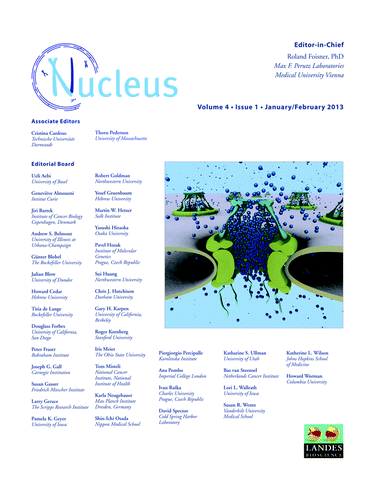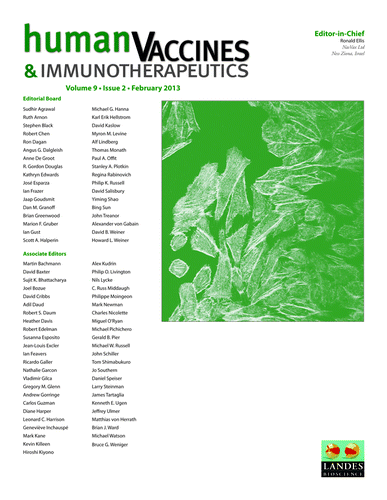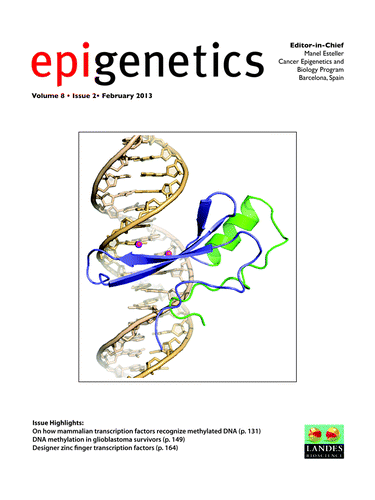Abstract
The fundamental role of actin in transcription
Cancer immunotherapy: mRNA as an off-the-shelf vaccine
DNA methylation contributes to altered miRNA expression profiles in cervical cancer
miRNAs contribute to autophagy in cancer
The fundamental role of actin in transcription
Nuclear actin participates in chromatin remodeling and histone modifications. Moreover, it is involved in different phases of gene transcription by all three eukaryotic RNA polymerases. Actin is co-transcriptionally assembled into nascent ribonucleoproteins (RNPs), it is potentially involved in RNA processing and it is a component of ribosomes. In addition, nuclear actin interacts with certain transcription factors and determines their subcellular localization. Nuclear actin performs its multitask activities through tight interactions with different sets of proteins. This high degree of promiscuity in the spectrum of protein-to-protein interactions correlates well with the conformational plasticity of actin and the ability to undergo regulated changes in its polymerization states. A recent review by Dr Piergiorgio Percipalle discusses the fundamental role of actin in transcription. By focusing on the multiple tasks performed by actin and actin-binding proteins, possible models of how actin dynamics controls the different phases of the RNA polymerase II transcription cycle are being identified.Citation1.
Reference
- Percipalle P. Co-transcriptional nuclear actin dynamic. Nucleus 2013; 4:43 - 52; http://dx.doi.org/10.4161/nucl.22798
Cancer immunotherapy: mRNA as an off-the-shelf vaccine
Two decades ago, mRNA became the focus of research in molecular medicine and was proposed as an active pharmaceutical ingredient for the therapy of cancer. In this regard, mRNA has been mainly used for ex vivo modification of antigen-presenting cells (APCs), such as dendritic cells (DCs). This vaccination strategy has proven to be safe, well-tolerated and capable of inducing tumor antigen-specific immune responses. Recently, the direct application of mRNA for in situ modification of APCs, hence immunization, was shown to be feasible and at least as effective as DC-based immunization in pre-clinical models. The application of mRNA as an off-the-shelf vaccine could represent an important step in the development of future cancer immunotherapeutic strategies. In a recent commentary, Dr Karine Breckpot and coworkers discuss the use of ex vivo mRNA-modified DCs and “naked mRNA” for cancer immunotherapy focusing on parameters such as the employed DC subtype, DC activation stimulus and route of immunization. In addition, the authors provide an overview on the clinical trials published so far, trying to link their outcome to the aforementioned parameters.Citation1.
Reference
- Van Lint S, Heirman C, Thielemans K, Breckpot K. mRNA: From a chemical blueprint for protein production to an off-the-shelf therapeutic. Hum Vaccin Immunother 2013; 9; In press PMID: 23291946
DNA methylation contributes to altered miRNA expression profiles in cervical cancer
Cervical cancer is initiated by a persistent infection with high-risk (hr) types of the human papilloma virus (HPV) and represents the third most common cancer in women worldwide. The development of cervical squamous cell carcinoma (SCC) is characterized by well-defined precursor lesions, called cervical intraepithelial neoplasia (CIN), graded 1–3. Both chromosomal alterations and epigenetic changes are known to contribute to the necessary changes in gene expression during hrHPV-mediated transformation. Both mechanisms have recently been shown to be involved in the deregulation of microRNA (miR) expression in cervical cancer. Due to their ability to alter the expression of protein-coding oncogenes and tumor suppressor genes, miRs are now widely accepted as crucial players in cancer development. A previous study identified 32 miRs showing decreased expression in high-grade CIN and carcinomas not associated with a chromosomal loss, six of which were located within a CpG island. In a follow-up study, Dr Renske Steenbergen and colleagues investigated to what extent these miRs (hsa-miR-149, -203, -210, -375, -572 and -638) are subject to DNA methylation-mediated transcriptional repression in cervical carcinogenesis. The authors found evidence for methylation-mediated transcriptional repression of hsa-miR-149, -203 and -375 in cervical cancer. Methylation of the latter two was already apparent in precancerous lesions and represent functionally relevant events in HPV-mediated transformation. Increased hsa-miR-203 methylation was detectable in scrapes of women with high-grade CIN, indicating that methylated miRs may provide putative markers to assess the presence of (pre)cancerous lesions.Citation1.
Reference
- Wilting SM, Verlaat W, Jaspers A, Makazaji NA, Agami R, Meijer CJ, et al. Methylation-mediated transcriptional repression of microRNAs during cervical carcinogenesis. Epigenetics 2013; 8:220 - 8; http://dx.doi.org/10.4161/epi.23605; PMID: 23324622
miRNAs contribute to autophagy in cancer
Autophagy is a catabolic process that allows cellular macromolecules to be broken down and recycled into metabolic precursors. It is a highly conserved, critical process, allowing cells to gain survival advantages under various stress situations due to growth and environmental changes. Mounting evidence indicates that the post-transcriptional and translational controls mediated by non-coding miRNAs (miRs) contribute significantly to autophagy in cancer. Such acute modulation of protein synthesis mediated by miRs provides cells with advantages in response to starvation, genotoxic stress and hypoxia. A recent Review by Dr Jingfang Ju and colleagues highlights some of the important discoveries and molecular insights of miRs in regulating autophagy based on various cancer models. The authors conclude that modulating miRs might open a new direction to change cancer cells in response to stress by altering the autophagy process and, in turn, could provide new therapeutic strategies to overcome chemoresistance.Citation1.
Reference
- Zhai H, Fesler A, Ju J. MicroRNA: A third dimension in autophagy. Cell Cycle 2013; 12:246 - 50; http://dx.doi.org/10.4161/cc.23273; PMID: 23255136



